David Chipperfield Architects‘s most recently completed residential project in New York at 11-19 Jane Street draws inspiration from the rich domestic architecture of Greenwich Village. The six-storey, red brick building replaces a low-rise car park that once interrupted the residential street front. The new volume negotiates between the scale of the neighbouring buildings and reinforces the identity of this historic district. It comprises two duplex townhouses, lateral apartments, and a penthouse with its own roof garden. The roof terrace and a rear garden are designed by Belgian landscape architect Peter Wirtz, providing a private outdoor space and a connection to nature.
-Text provided by the architects
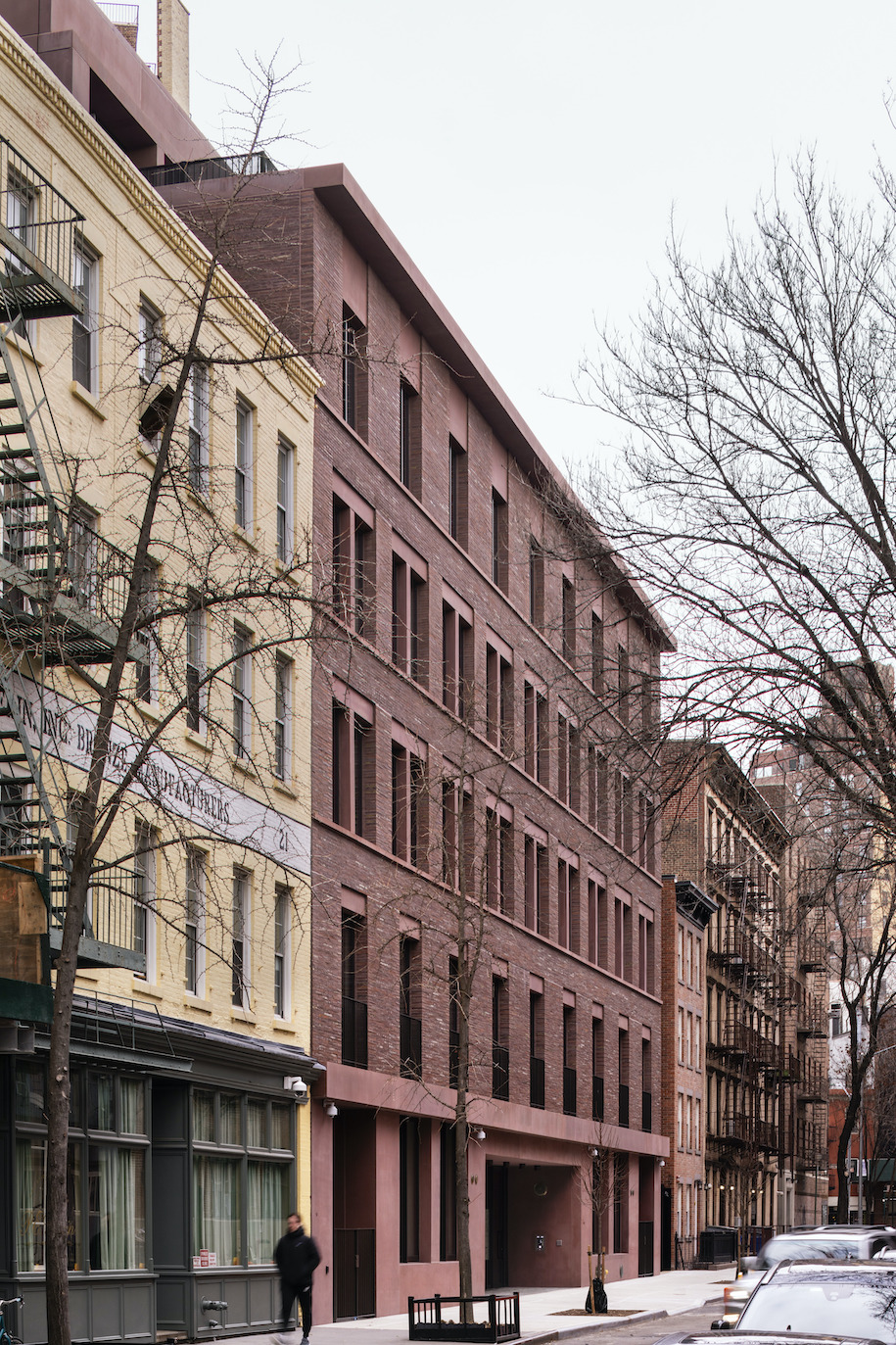
The practice’s approach to residential architecture relies foremost on an intelligent spatial arrangement, elevating the experience of domestic rituals throughout the day, and cultivating a sense of place in relation to the world outside. It concerns not only individual comfort within the private realm but also a positive contribution to the local environment.
David Chipperfield says: “Looking to integrate with its immediate context, the design for this project reinterprets the distinctive residential architecture of the Greenwich Village Historic District, in both material and expression. The natural variation of the handmade elongated brick on the façades and the rhythm of windows adds texture and character that compliments its surroundings and reinforces the identity of the area.”
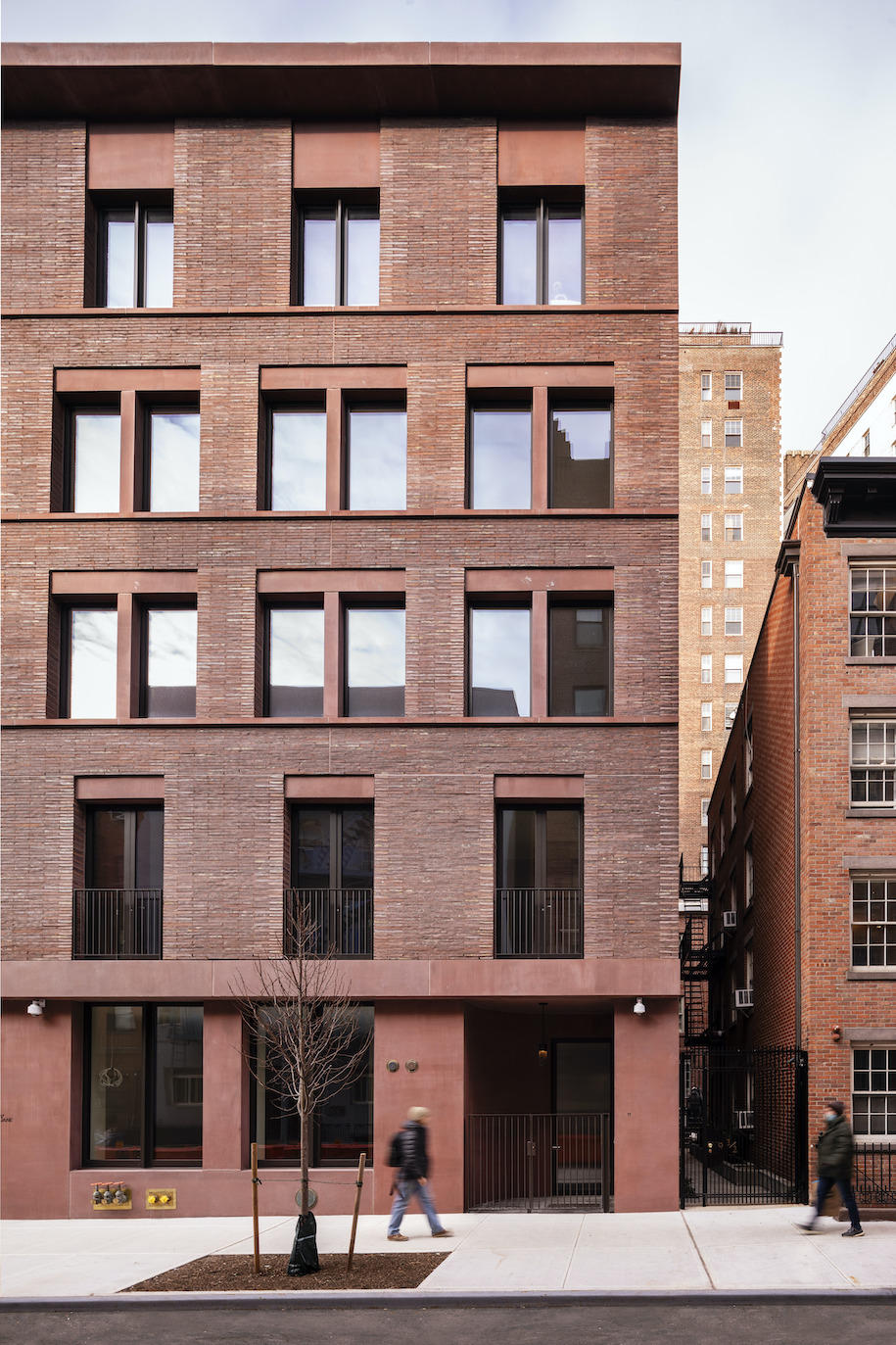
Elsewhere in New York, final completion is imminent for the practice’s mixed-use tower The Bryant situated on the south-east corner of Bryant Park in Midtown Manhattan, and design work continues for the new Rolex building on Fifth Avenue and 53rd Street.
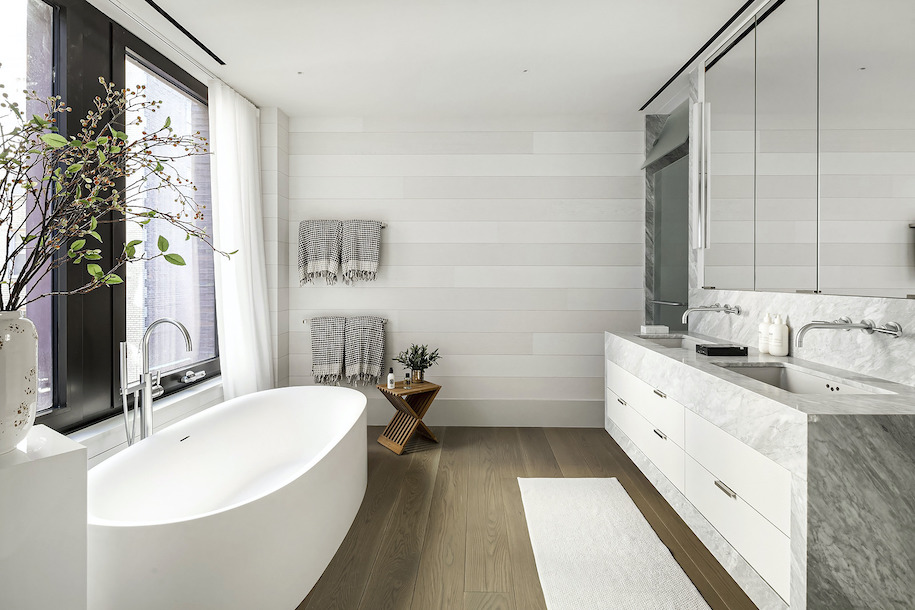
On the north-western edge of the Greenwich Village Historic District, Jane Street is characterised by a mix of red brick townhouses and larger apartment blocks, mainly dating from the nineteenth and twentieth centuries respectively. This new apartment building is located on a site previously occupied by a 1920s, two-storey parking garage. The six-storey building comprises basement parking, duplex townhouses, lateral apartments, and a penthouse with its own roof garden. Mediating between the different sizes of the surrounding structures, the inserted volume both respects the scale of the street and reflects its architectural context.
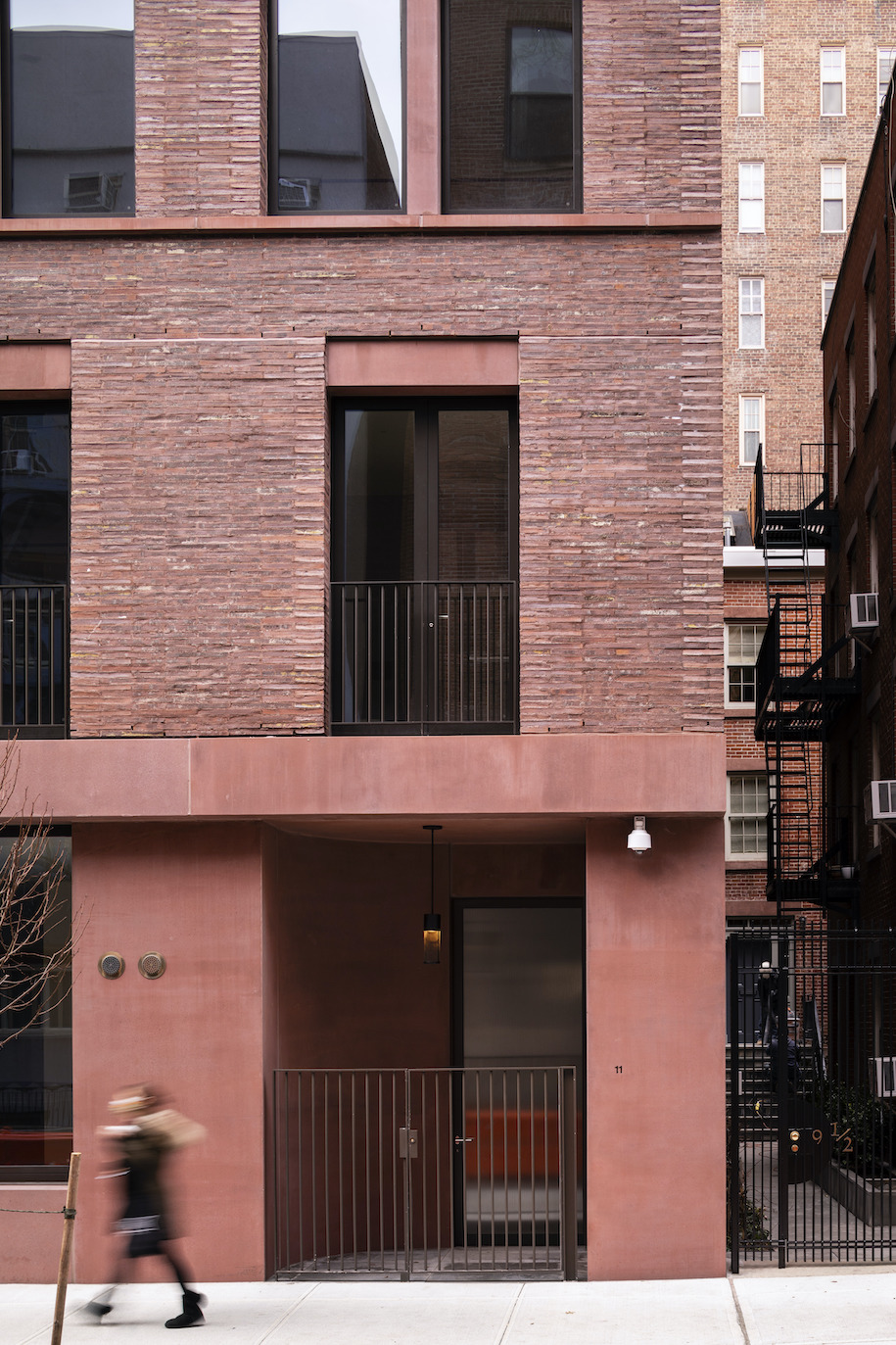
The five storeys that can be seen from street level offer a contemporary interpretation of the surrounding brick townhouses, with a distinct articulation of base, middle and crown. The scale of the entrances as well as the rhythm of the windows, combined with the use of mullions and string courses, reference the rich domestic architecture of the West Village. Local context is also referenced through the colours and materials of the façades.
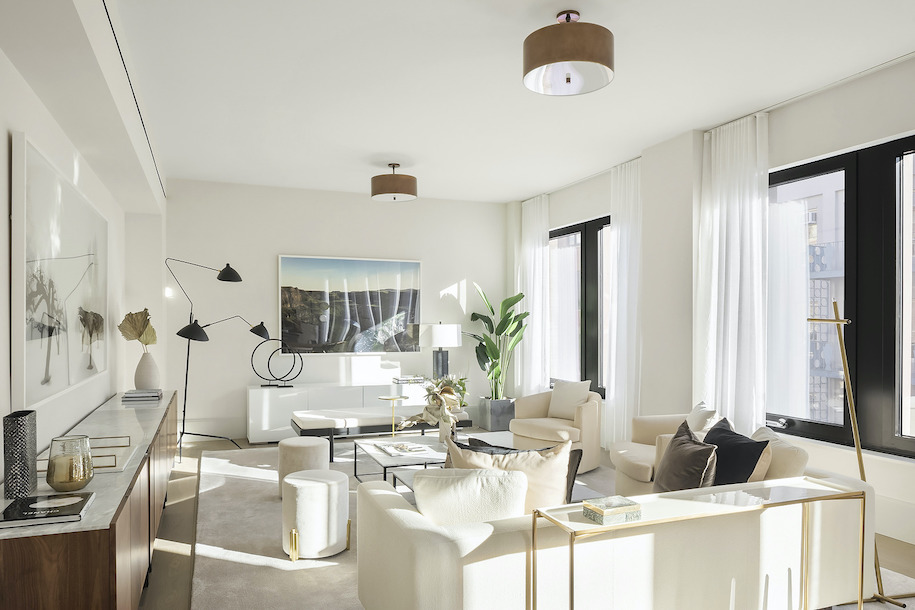
The building has a symmetrical composition, with the townhouse entrances recessed at either end of the ground floor. In the centre is the larger double entrance for the apartments and the garage. The windows differ in design for each element of
the residential scheme. The two-storey townhouses, for example, have balconied French windows, while the lateral apartments on the two storeys above have broader openings divided by concrete mullions. The penthouse at the top, with its higher ceilings, is set back from the street. It can be read as a simple post and beam structure, framing large windows that overlook a private garden.
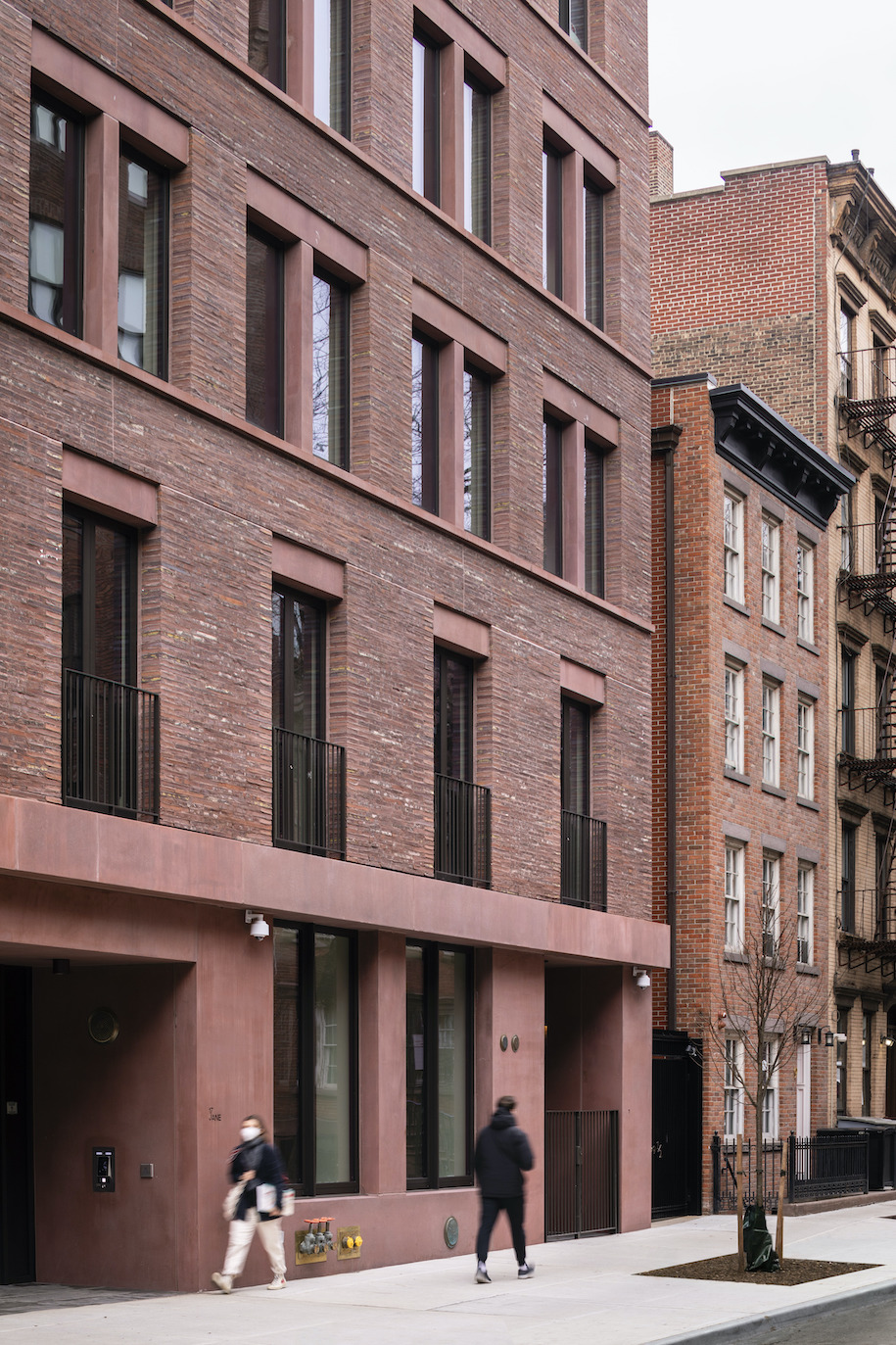
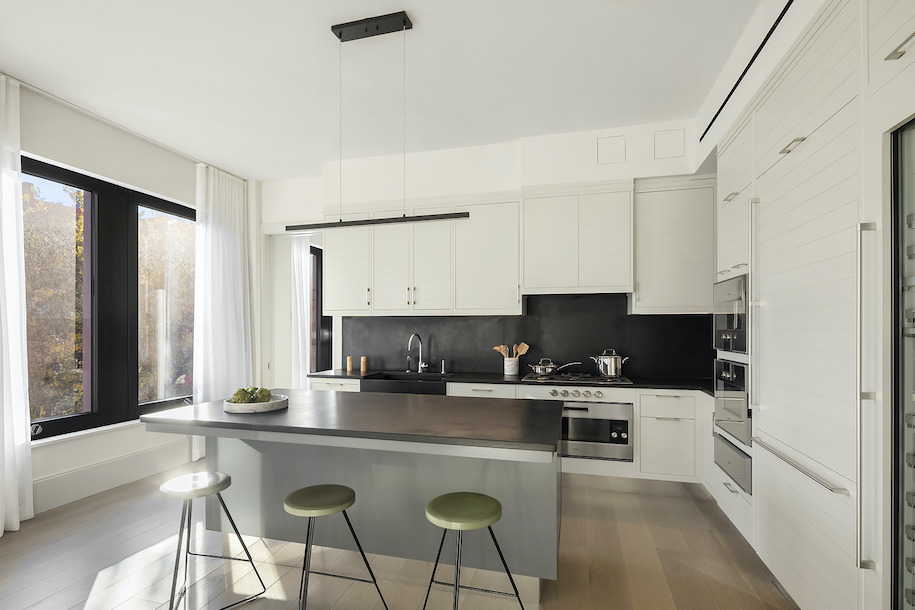
Red pigmented concrete is used for the ground floor giving it a strong sculptural presence. The upper storeys are clad in Roman brick, with string courses, lintels and mullions in the same red concrete, providing subtle colour variations throughout. The street front is crowned by a projecting cornice, which echoes the projecting string course between ground and first floors and gives extra shadow and articulation to the façade. The structure of the penthouse also uses red concrete.
Restrained but solid materials are used throughout, with bronze railings and window and door frames outside and terrazzo floors in the communal areas. The townhouses and apartments feature Carrara marble and natural oak floors. The roof terrace and a rear garden are designed by Belgian landscape architect Peter Wirtz ensuring that all apartments have a connection to nature.
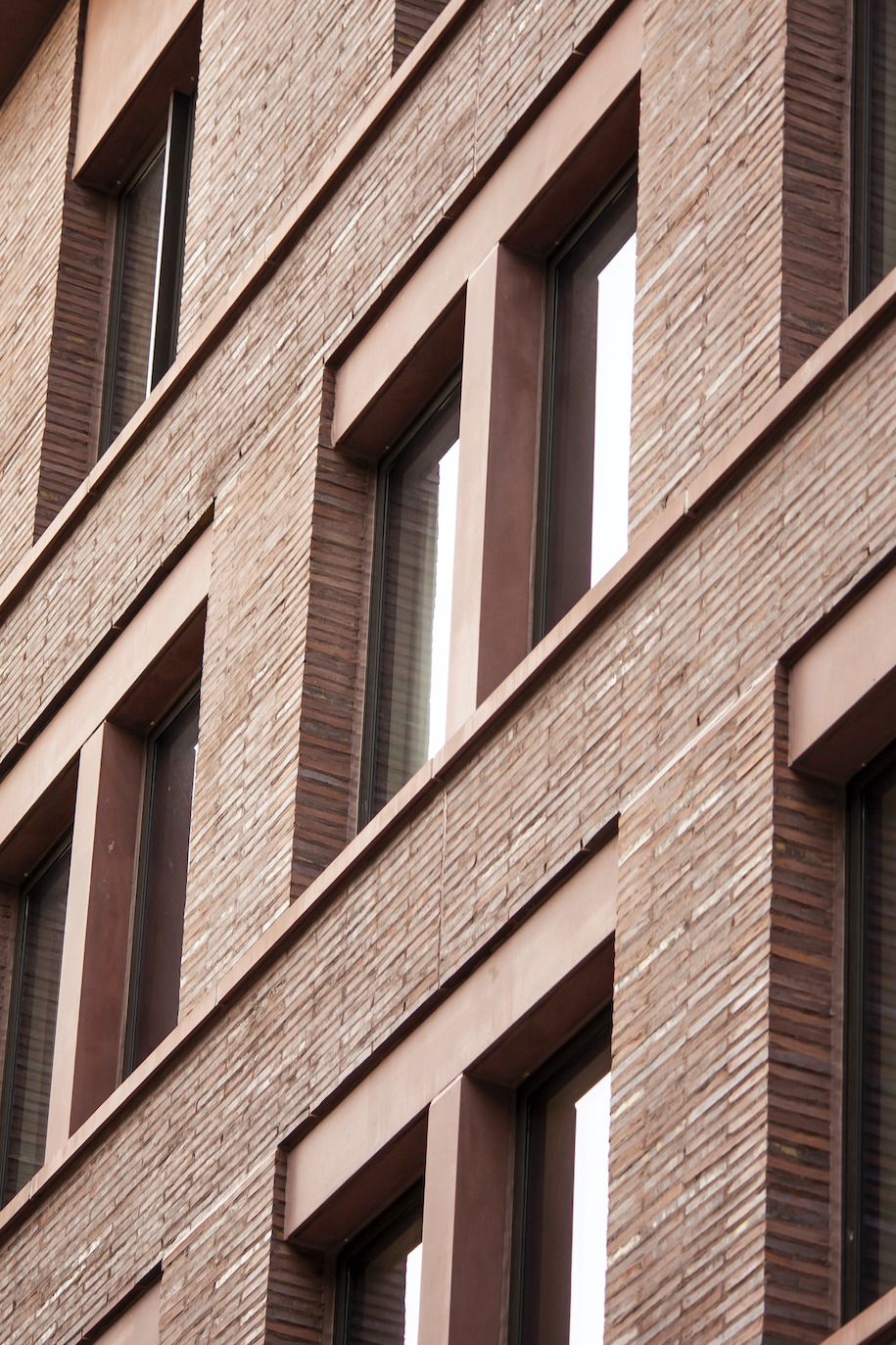
Drawings
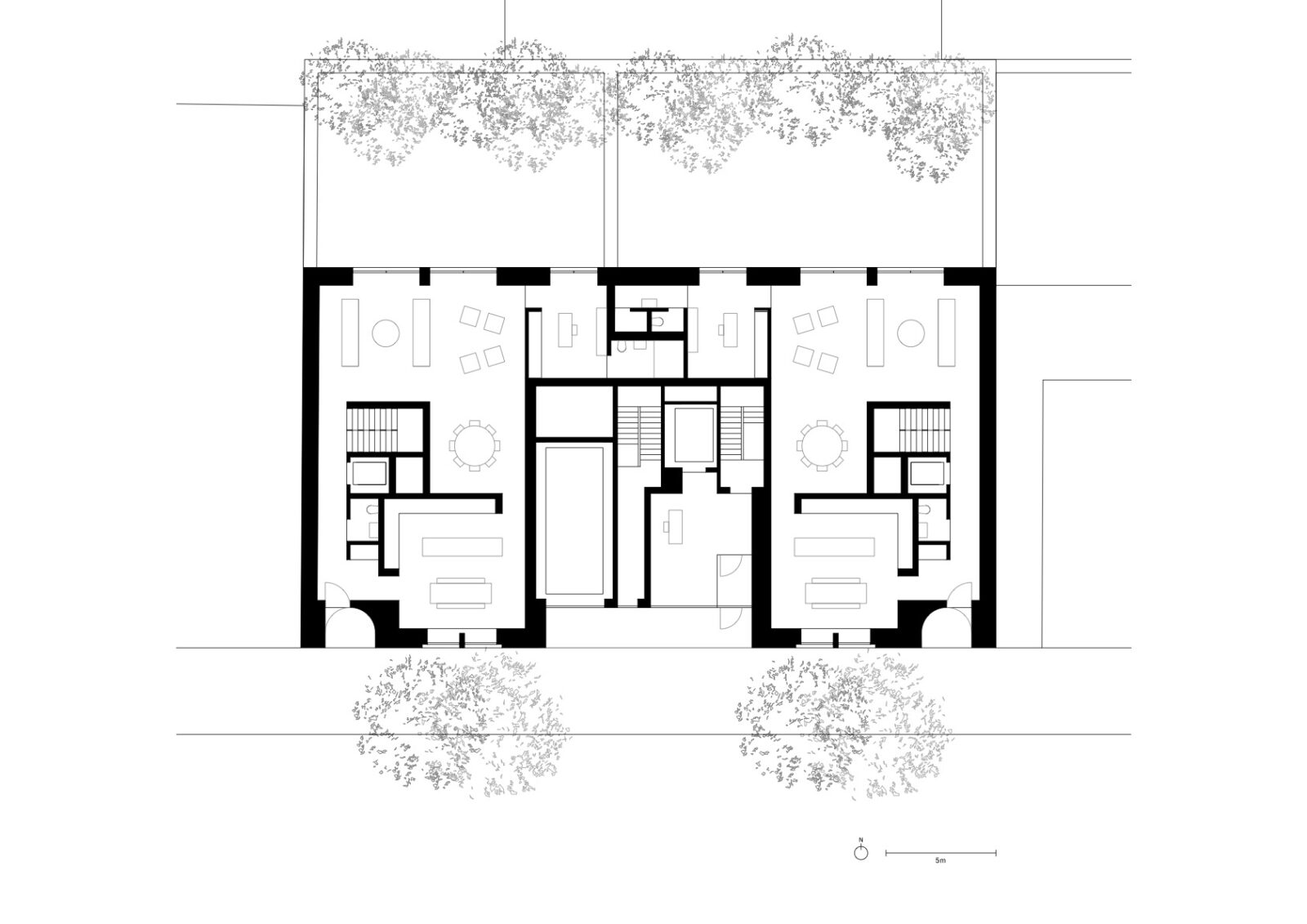
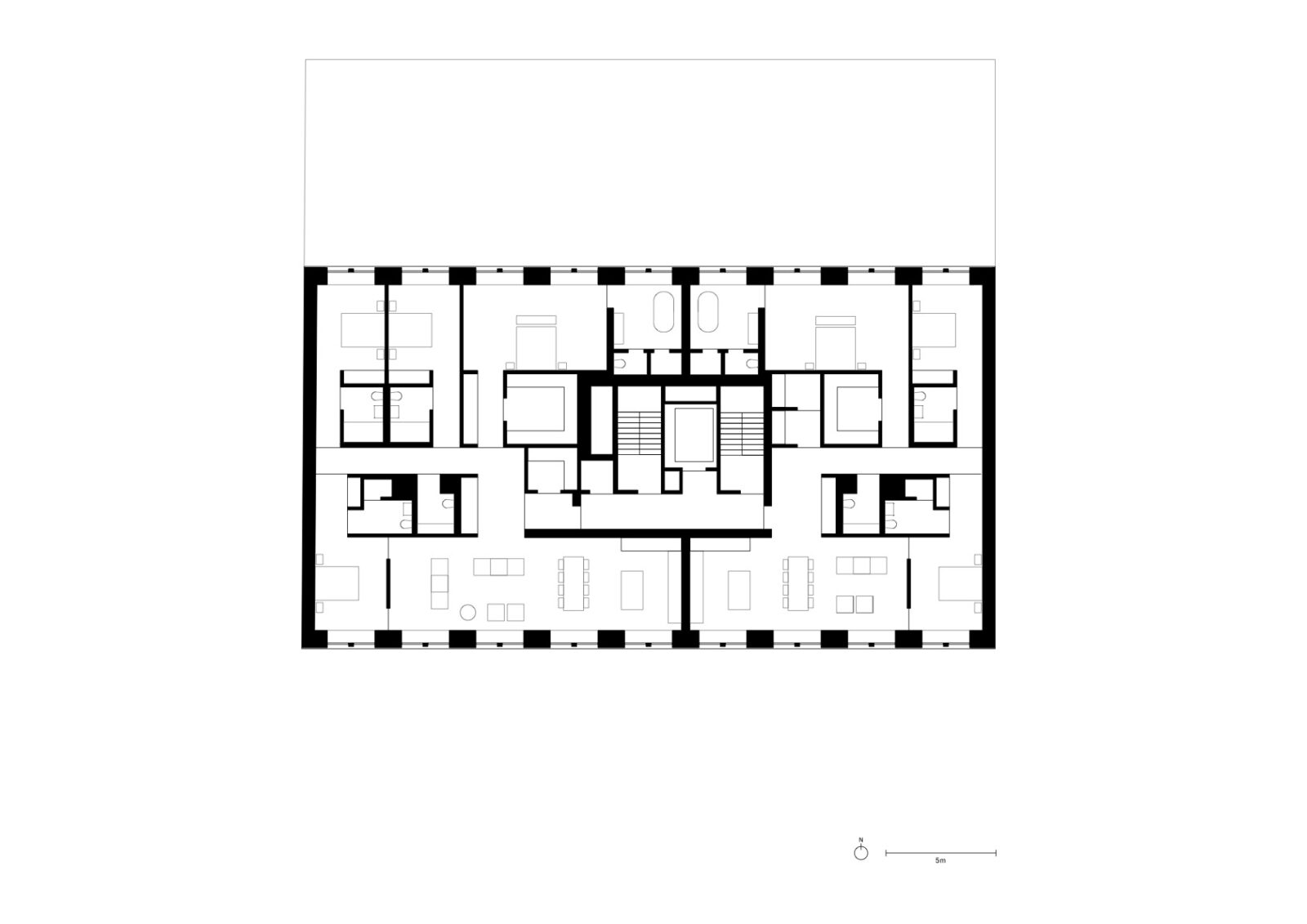
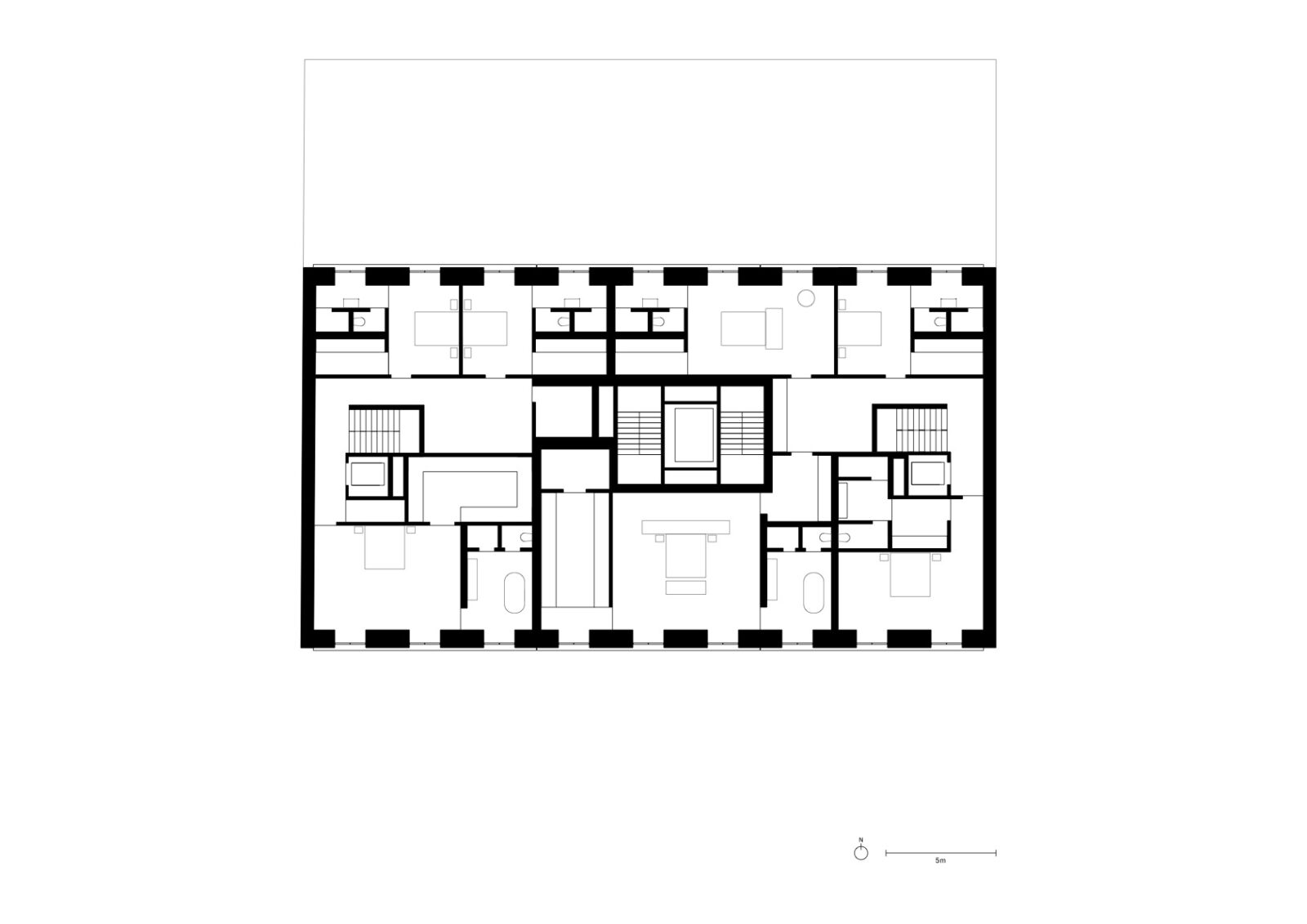
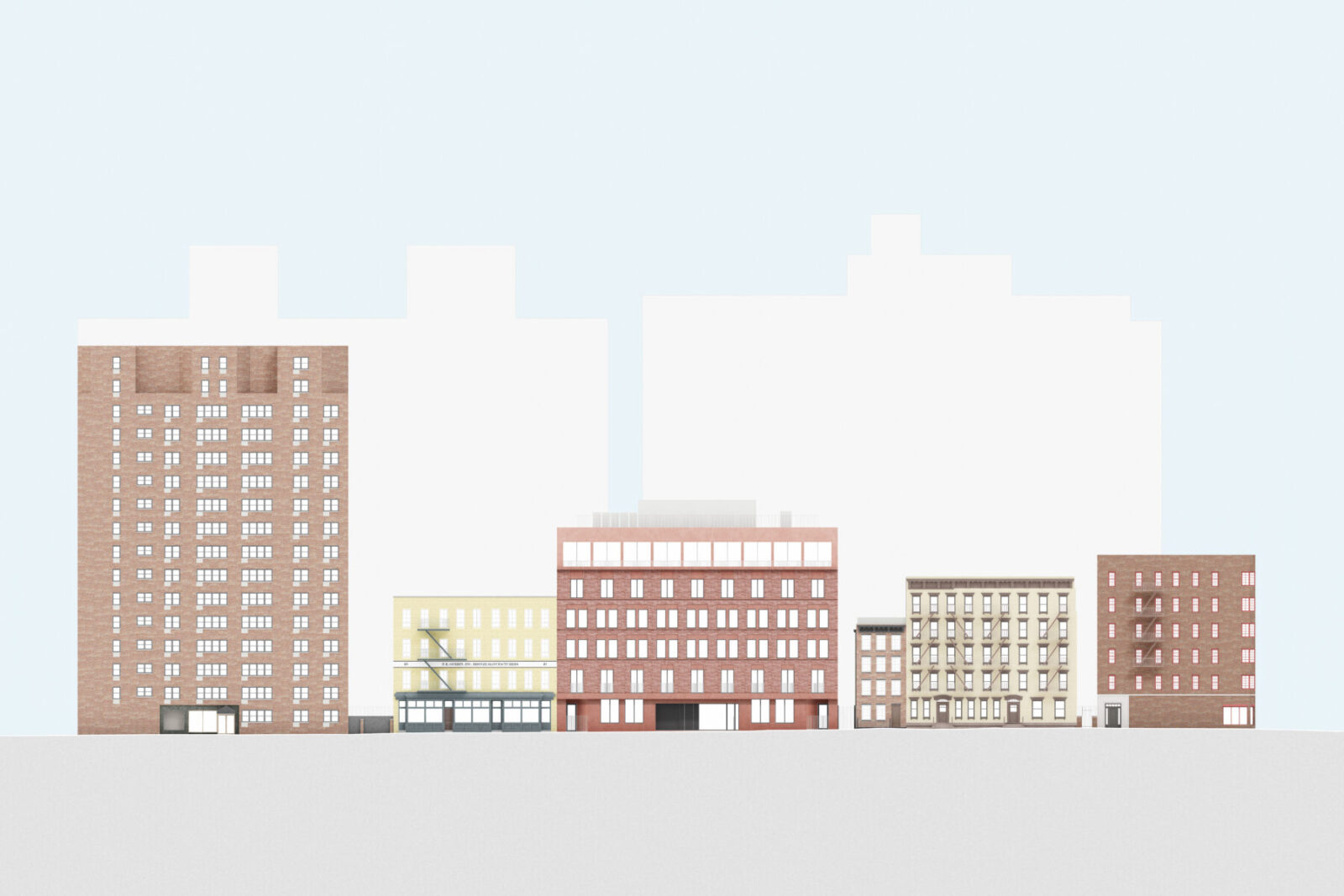
Facts & Credits
Project start 2015
Construction start 2017
Completion 2021
Gross floor area 3,500m2
Client Edward J. Minskoff Equities, Inc.
Architect David Chipperfield Architects London
Directors in charge David Chipperfield, Billy Prendergast
Project architects Gonçalo Baptista, Mattias Kunz, Peter Jurschitzka
Project team Gabriel Fernandez, Clemens Gerritzen, Johannes Leskien, Mattia Lusignani, Ana Martins, Francis Naydler, Tobias Rabold, Martin Reynolds
Landscape architect Wirtz International nv
Lighting Arup Ltd.
Contact architect Montroy Andersen DeMarco
Structural engineer Ysrael A. Seinuk P.C.
MEP Buro Happold Ltd.
Building envelope Wiss, Janney, Elstner Associates, Inc.
Civil engineer Philip Habib & Associates, P.E., P.C.
LPC consultant Higgins Quasebarth & Partners
Construction Sciame Construction, LLC
Project manager EJME
Photography James Ewing / JBSA
READ ALSO: Cultural Center in Aliki Thasos, Revival of the Ancient Museum - The Art of Marble Carving | Diploma Thesis by Loukas Mettas & Despoina Papadopoulou